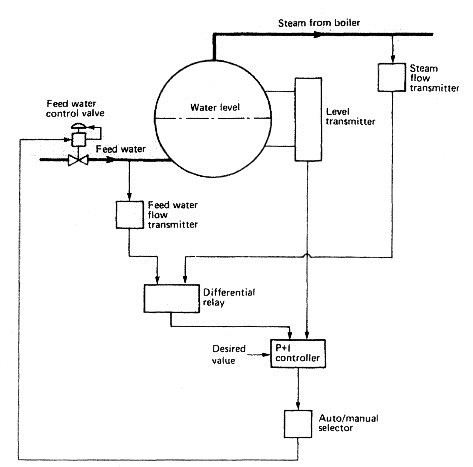
Boiler Water Level Control for Modern High-pressure Watertube Boiler
A modern high-pressure, high-temperature watertube boiler holds a
small quantity of water and produces large quantities of steam. Very
careful control of the drum water level is therefore necessary. The
reactions of steam and water in the drum are complicated and require
a control system based on a number of measured elements.


